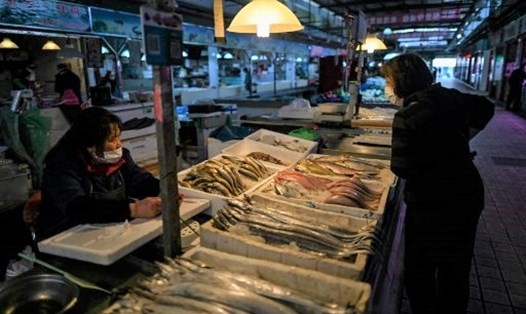According to CNA, guidelines from the US Centers for Disease Control and Prevention (CDC) affirm that, "there is no evidence that the food processing or consumption process is related to COVID-19".
The main route of the SARS-CoV-2 virus is known to be human-to-person transmission through drips of the drug when sneezing, coughing, speaking or even breathing.
I dont see any link between COVID-19-positive frozen products and any fear that this is the cause of long-distance transmission, says C Brandon Ogbunu, a pathologist at Yale University.
When the virus crosses international borders, it will almost certainly be transported by humans, not commercial human products.
Previously, Chinese officials said that the frozen chicken wing surface model imported from Brazil in Shenzhen as well as the mau outside the packaging of frozen Ecuadoran shrimp imported from Tay An city tested positive for the genetic material (RNA) of the SARS-CoV-2 virus.
Explaining this, scientist Ogbunu said that laboratory processes for searching for RNA are also the basis for most COVID-19 tests performed on humans. But RNA is just a sign of the presence of a virus, as the virus can leave traces of genetic material even after it is destroyed.
This is just a sign that the virus has been there at a certain time, Mr. Ogbunu affirmed.
After the samples used for testing were taken from the skin surface and the results were positive, the authorities conducted similar tests on a number of people they suspected of having come into contact with the products. They also tested a series of other packaged goods. All samples analyzed so far have been negative for the SARS-CoV-2 virus RNA, according to a release from the CDC Shenzhen office.
Experts say that COVID-19 is transmitted through frozen products almost impossible because this type of virus exists in a delicate lining and is vulnerable to environmental disruptions including harsh changes in temperature. Therefore, it is difficult for it to go through a journey across a continent in a frozen state, then transmit it to the hands of humans and then invade through the nose and mouth.
Or another unimaginable scenario is that the virus can survive after the food is cooked and enters the human acid-rich digestive tract and then survive in the airway.
The CDC has previously noted: There is a high chance that virus can spread through contaminated surfaces, including food or food packaging. However, they did not mention how the virus was present on that surface.
If you don't want to get infected, wash your hands regularly and avoid close and direct contact with others is the most effective way, according to scientist Ogbunu.









